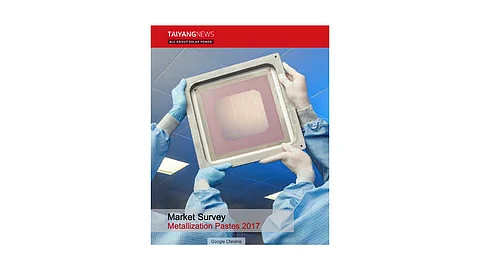

Metallic pastes, taking the role of electrical contacts on solar cells, have always been at the epicenter of discussions concerning improvements in PV. Pastes not only influence solar cell's performance characteristics considerably, they equitably affect the manufacturing costs of cell processing. While cell efficiencies ranged around 16 to 17% about 10 years ago, today typical solar cell efficiencies have reached around 20%, but there are already mono PERC cells in production that exceed 22%.
For our market survey on metallization pastes, 14 suppliers, including the market leaders, provided the data for 122 products. These paste models are listed under 7 different categories –
Front contact silver pastes (p-type)
Silver pastes for double or dual printing (p-type)
Rear tabbing silver pastes
Aluminum pastes for Back Surface Field (BSF)
Pastes for Passivated Emitter and Rear Cell (PERC) architecture
Pastes for n-type cells
Low temperature curable pastes, typically used for heterojunction cells and some thin-film PV
The 14 companies answering our market survey are mainly from China. Even those 5 that are not originally Chinese companies – Heraeus from Germany, DuPont from the United States, Monocrystal from Russia and Samsung and Phoenix Materials from Korea – are usually manufacturing in China, where the bulk of the cell manufacturers is located.
DK Electronic Materials Co, China
DuPont, US
Environmental Natural Chemicals (ENC), China
Heraeus, Germany
Hunan National Silver New Materials Co.,Ltd (HNSNM), China
Jiangsu Hoyi Technology Co., Ltd, China.
Monocrystal PLC, Russia
Phoenix Materials Co., Ltd, Korea
Samsung SDI, Korea
Shanghai Transcom Scientific Co., Ltd., China
Soltrium Advanced Materials Technology, China
SZ Glory New Materials, China
Zhejiang Gonda Electronic Technology Co., Ltd, China
Zhejiang LongSun Electronic Technology Co., Ltd, China
The TaiyangNews Market Survey on Metallization can be downloaded free of charge here.
